Mountains & Minds: Learners and Leaders
Stewardship
Goal:
As steward of a land-grant institution, MSU will responsibly manage its human, physical, economic and environmental resources in an open and sustainable manner.
Objective S.1:Human Resources. Attract, develop and retain the best faculty and staff to achieve the MSU mission.
Metric S.1.1: By 2019, increase the average MSU staff salary to the representative peer market average.
Technical note: Comparative wage data are collected and analyzed periodically. Most classified and professional positions may be compared to local, state and national averages for similar positions as appropriate for the recruiting and compensation market. State-collected and higher-education specific wage data are used as benchmarks. CUPA-HR averages for doctoral-granting institutions are used for most professional and some classified positions that are recruited nationally or compensated similarly across institutions. Montana Department of Labor OES statistics are used for most classified positions, with county level estimates available in some cases. MUS and state policy effectively control starting wages for classified and most professional positions.
Metric S.1.2: By 2019, increase the average MSU faculty and administrative salary to at least 80 percent of the representative peer market average.
Technical note: Faculty and administrators tend to be recruited from regional/national pools and should be compared to regional/national peer sets. The average tenure-track faculty member's salary is currently 76 percent of the national average for the appropriate discipline and rank and the average administrator's salary is 69 percent of the national average for similar positions. Tenurable faculty and full-time adjuncts are typically compared to Oklahoma State University Faculty Salary Survey averages for public and land-grant RU/VH institutions within discipline and rank. The current CBA governs the use of these data for salary adjustments. Administrator salaries are compared to CUPA-HR Compensation Survey averages for all doctoral-granting participating institutions within similar job title/role definitions.
Metric S.1.3: By 2019, faculty and staff participation in professional development opportunities will increase 20 percent.
Technical note:Participation is currently tracked for long established programs and for professional development opportunities through the Center for Faculty Excellence and Human Resources Professional Development and Training. In addition, we will monitor tuition waivers for employees and expenditures for conference participation as defined by account code 62817.
Objective S.2:Physical Resources. Enhance aesthetic appeal and functional quality of MSU physical resources to support high quality learning, research and work environments.
Metric S.2.1: By 2019, all university classrooms and scheduled learning spaces will utilize current educational technologies and environments to meet the needs of a variety of educational experiences in order to enhance student learning outcomes.
Technical note: Recognizing the value of diverse pedagogies and correlating improved student success with attributes of the learning environment, a tiered system of technology classification exists for ranking MSU classrooms, as defined in the MSU Classroom Design Guidelines: the greater the technological presence the higher the tier. The following illustrates the 2019 target percentages of learning spaces per tier: tier 3 or higher-10 percent; tier 2-70 percent; tier 1-10 percent; and tier 0–10 percent.
Metric S.2.2: By 2019, MSU will increase accessibility to campus facilities, in accordance with the Campus ADA Transition.
Technical note: Progress will be tracked by the ADA committee through periodic follow-up inventories.
Metric S.2.3: By 2015, MSU will develop and implement a comprehensive master plan.
Objective S.3: Economic Resources. Increase and effectively allocate resources in support of the MSU Strategic Plan.
Metric S.3.1: By 2019, budgeting processes will reflect alignment with the MSU strategic plan.
Technical note: MSU will align and justify budgets at all levels and from all sources with the goals in this strategic plan and the unit-level plans that will be developed to reach university goals. This includes an initial phase-in of an all funds budgeting model by FY16 under the leadership of the Budget Council and documenting the alignment of new initiative funding with the MSU strategic plan.
Metric S.3.2:Efficiency and effectiveness of mission support processes will show improvement by 2019.
Technical note: The ongoing “Open MSU” initiative is laying the groundwork necessary to align resources with business service improvements. These ideas and administrative process improvements will continue to develop over time.
Metric S.3.3: By 2019, fiscal resources will increase in support of the MSU Strategic Plan.
Technical note: Explicit goals for external fundraising will not be announced until a campaign is ready to begin.
Objective S.4: Environmental Resources. Promote sustainable stewardship and a culture of resource conservation at MSU.
Metric S.4.1: MSU will achieve a 20 percent reduction in Greenhouse Gas Emissions (GHG) from 2009 levels by 2025.
Technical note: Goal taken from MSU's Climate Action Plan. Progress will be reported biannually to the American College & University Presidents Climate Commitment and to MSU’s Campus Sustainability Advisory Council.
Metric S.4.2: MSU will increase waste diverted from landfill to 25% by 2020, in addition to implementing a campus wide source reduction and responsible purchasing policies.
Technical note: Goal taken from MSU's Climate Action Plan. Progress will be reported biannually to MSU’s Campus Sustainability Advisory Council.
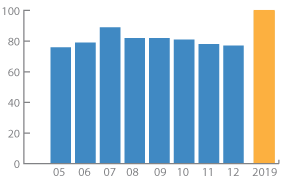
Metric S.1.1:MSU Average Staff Employee Percent of Peer Salaries (Mid-Level Classified and Professional Staff)
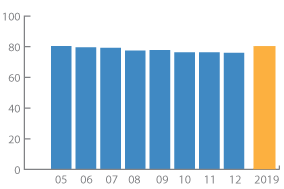
Metric S.1.2:MSU Average Faculty Percent of Peer Salaries
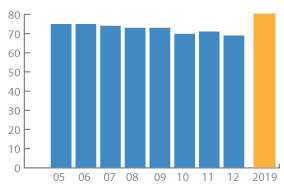
Metric S.1.2:MSU Average Administrator Percent of Peer Salaries
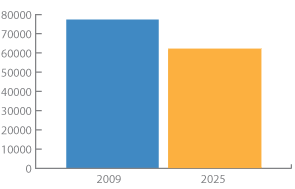
Metric S.4.1:Reduction in Greenhouse Gas Emissions
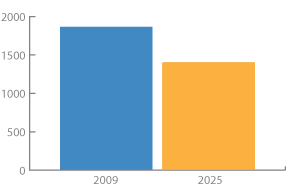
Metric S.4.2:Reduction in waste sent to landfill
